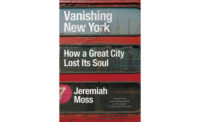What Makes a Great City

What Makes a Great City, by Alexander Garvin. Island Press, September 2016, 344 pages, $80.
What Makes a Great City, by Alexander Garvin. Island Press, September 2016, 344 pages, $80.
For urbanists, planners, and architects who appreciate well-designed public spaces, Alexander Garvin’s latest publication delivers a carefully constructed tour of cities that accomplish this goal. He shows how they successfully created or enhanced parks, plazas, and squares or established a broader array of civic improvements to attract investment and enhance quality of life.
While surveying North American and European cities to which he has traveled, and including lavish photographs, Garvin delivers broad principles about how governments, businesses, and private citizens work over time to improve urban environments. Nearly all of the case studies explored are largely strategies to subjugate, or at least segregate, cars and traffic from places to play, work, or spend as these cities plan their postindustrial futures.
The author of three editions of The American City: What Works, What Doesn’t, a textbook-like primer of major urban planning strategies and concepts, Garvin, who teaches urban planning at Yale and was a longtime New York City planning official, now has his own firm, AGA Public Realm Strategists. And he is the creator of the BeltLine plan to connect Atlanta’s disparate neighborhoods via an urban greenway. In the tradition of social scientist William H. Whyte, who studied the behavior of users of public places, What Makes a Great City reflects the author’s keen observations of why people gravitate to inviting parks and pedestrianized shopping districts.
It fittingly provides the history of how these environments evolved and who planned them.
For those who believe Bilbao’s resurgence was principally due to the reception of Frank Gehry’s Guggenheim Museum, Garvin thoughtfully illustrates in this new book how the municipality’s relocation of the region’s declining manufacturing base away from the formerly contaminated Nervion river, and extensive investment in new public transportation systems, stemmed the city’s depopulation and did as much as Gehry’s successful intervention to spur economic development.
Perhaps most intriguing of these case studies is Garvin’s depiction of the ongoing transformation of Houston’s Post Oak neighborhood—including the introduction of public transit and pedestrian amenities—in a city long known for unzoned, car-dependent suburban growth.
Surprisingly, the book omits discussion of New York’s High Line, given its impact as an immensely popular park, driver of development, and clear precedent for the Atlanta BeltLine, which here gets its due. In contrast to European and Canadian cities, the transformation of American urban spaces analyzed by Garvin has generally depended on the imposition of extra-municipal special assessment or taxation districts (BIDS and TIFS), as traditional government financing of public improvements has waned. Some commentary on this difference would have enhanced an otherwise impressive look at successful Western public planning.





